This week the ongoing battle for Gazala in the Western desert reached a climax as Rommel’s Afrika Korps inflicted heavy casualties on the Eighth Army; on 13 June the British lost so many tanks the day was known as ‘Black Saturday’. On 14 June General Ritchie ordered a retreat, which would not stop until the British and Commonwealth forces reached El Alamein. Also this week, German soldiers burned the Czech village of Lidice in reprisal for the killing of Richard Heydrich by partisans; all the men were killed, and all the women and children sent to concentration camps.
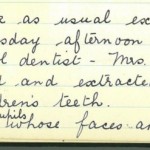
Back in Caithness the school dentist was still making her painful rounds. On 12 June she reached Auckengill School, as the Head Teacher recorded in the log book: “Work as usual except on Wednesday afternoon when the school dentist, Mrs Matheson, called and 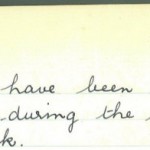 extracted several children’s teeth. Some pupils whose faces are badly swollen have been unable to be present during the remainder of the week.”
extracted several children’s teeth. Some pupils whose faces are badly swollen have been unable to be present during the remainder of the week.”
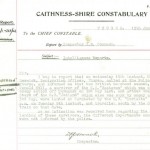 At sea, the war against the Arctic Convoys continued unabated and survivors of sunken merchant ships were often landed at ScrabsterOn 12 June the Thurso Police were notified that “two British merchant seamen, Allan Ronald Hill, a survivor of the S.S. “Boatavon” [Botavon], which was sunk by enemy action off Murmansk on 3rd May last, and Arthur Graham Stark of the S.S. “Jutland” which also was sunk by enemy action on 3rd May, were landed at Scrabster by the M.V. “Morialta” at 5-30 p.m. on Tuesday 9th instant.” . The ships had formed part of Convoy PQ-15.
At sea, the war against the Arctic Convoys continued unabated and survivors of sunken merchant ships were often landed at ScrabsterOn 12 June the Thurso Police were notified that “two British merchant seamen, Allan Ronald Hill, a survivor of the S.S. “Boatavon” [Botavon], which was sunk by enemy action off Murmansk on 3rd May last, and Arthur Graham Stark of the S.S. “Jutland” which also was sunk by enemy action on 3rd May, were landed at Scrabster by the M.V. “Morialta” at 5-30 p.m. on Tuesday 9th instant.” . The ships had formed part of Convoy PQ-15.
Thurso Town Council this week debated what to do about Old St Peter’s Church. The John O’Groat Journal 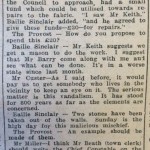 reported that the Council, which had recently taken over maintenance of the church, resolved to approach local solicitor D.B. Keith for funds. But vandalism, Councillors agreed, was an ongoing problem. Mr Custer suggested that “it would pay us to get somebody who lives in the vicinity to keep an eye on it.” Bailie Sinclair added, “Two stones have been taken out of the walls. Sunday is the high day for this malicious mischief.” It was resolved to get the town clerk to write to the chief constable about the damage that is being done, “and on the mischief throughout the town.”
reported that the Council, which had recently taken over maintenance of the church, resolved to approach local solicitor D.B. Keith for funds. But vandalism, Councillors agreed, was an ongoing problem. Mr Custer suggested that “it would pay us to get somebody who lives in the vicinity to keep an eye on it.” Bailie Sinclair added, “Two stones have been taken out of the walls. Sunday is the high day for this malicious mischief.” It was resolved to get the town clerk to write to the chief constable about the damage that is being done, “and on the mischief throughout the town.”
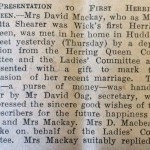 The very first crowning of the Wick Herring Queen had been in 1937. Now, the John
The very first crowning of the Wick Herring Queen had been in 1937. Now, the John 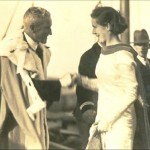 O’Groat Journal reported that Miss Retta Shearer, the first Herring Queen (crowned on 12 July 1937) had just got married, and was now Mrs David Mackay. In a nice gesture, she was “met in her home in Huddart Street yesterday (Thursday) by a deputation from the Herring Queen Committee and the Ladies’ Committee and presented with a gift to mark the occasion of her recent marriage.” The gift was a purse of money. (Image of Retta Shearer courtesy of Caithness.org; you can read more about the history of the Herring Queen at http://www.caithness.org/history/herringqueens/
O’Groat Journal reported that Miss Retta Shearer, the first Herring Queen (crowned on 12 July 1937) had just got married, and was now Mrs David Mackay. In a nice gesture, she was “met in her home in Huddart Street yesterday (Thursday) by a deputation from the Herring Queen Committee and the Ladies’ Committee and presented with a gift to mark the occasion of her recent marriage.” The gift was a purse of money. (Image of Retta Shearer courtesy of Caithness.org; you can read more about the history of the Herring Queen at http://www.caithness.org/history/herringqueens/
